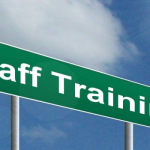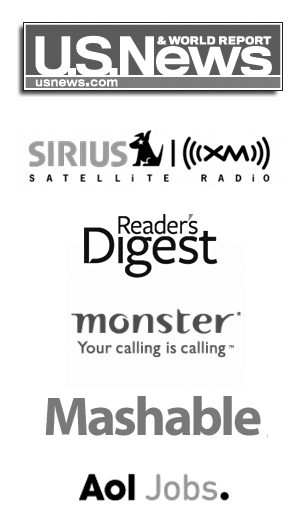By the Employer Assistance and Resource Network on Disability Inclusion (EARN)

October is National Disability Employment Awareness Month (NDEAM). First observed in 1945, NDEAM celebrates the many skills and talents people with disabilities contribute to America’s workplaces and economy. This nationwide campaign is spearheaded by the U.S. Department of Labor’s Office of Disability Employment Policy (ODEP), which each year selects a theme. This year’s theme— “America’s Recovery: Powered by Inclusion”—emphasizes the essential role workers with disabilities play in the nation’s economic recovery in the wake of the COVID-19 pandemic.
Employers of all sizes and in all industries are encouraged to participate in NDEAM. ODEP offers a range of resources to help, including ready-to-use materials such as sample press releases and newsletter articles, as well as this year’s official poster. And the spirit of NDEAM is something that employers can carry throughout the year by creating a disability-inclusive workplace culture with support from the Employer Assistance and Resource Network on Disability Inclusion (EARN).
EARN is a free resource funded by ODEP that provides information and tools to help employers recruit, hire, advance and retain people with disabilities. EARN’s Inclusion@Work Framework, which was developed in collaboration with employers with exemplary practices in disability employment, outlines core components of a disability-inclusive workplace, along with a menu of strategies for achieving them. From inclusive recruitment practices to effective communication, here are ten ways companies can foster workplace inclusion of people with disabilities:
- Lead the Way: The foundation for a disability-inclusive work environment is establishing an inclusive business culture. This begins by gaining buy-in from executive leadership. Other examples of best practices in this area include:
- Making equal employment opportunities for people with disabilities an integral part of your organization’s strategic mission.
- Establishing a team that includes executives with disabilities to support the recruiting, hiring, retention and advancement of employees with disabilities.
- Conducting employee engagement surveys to gather input on whether the workplace environment is accessible and inclusive.
2. Build the Pipeline: Proactive outreach to and recruitment of people with disabilities is the foundation of a successful workplace disability inclusion program. To build a pipeline of applicants, employers should develop relationships with various recruitment sources. Best practices include:
- Partnering with local and state service providers (such as vocational rehabilitation agencies).
- Attending career fairs targeted at people with disabilities.
- Engaging your company’s disability-focused employee resource group (ERG) in recruitment efforts.
- Providing inclusive mentoring and internship opportunities.
3. Hire (& Keep) the Best: To support the hiring, retention and advancement of employees with disabilities, companies should ensure inclusion and accessibility is part of all policies and processes across the employment life cycle. This includes job announcements, qualification standards, workplace accommodations, career development and advancement and promotion opportunities.
4. Ensure Productivity: All employees need the right tools and work environment to perform their jobs effectively. Employees with disabilities may need workplace adjustments—or accommodations—to maximize their productivity. Examples of workplace accommodations include automatic doors, sign language interpreters and flexible work schedules or telework. According to the Job Accommodation Network (JAN), more than half of all workplace accommodations cost nothing to provide. Furthermore, JAN research has found that most employers report financial benefits from providing accommodations, including reduced insurance and training costs and increased productivity.
5. Communicate: Attracting qualified individuals with disabilities requires clear communication, both externally and internally, about your company’s commitment to disability inclusion. This can include internal campaigns, disability-inclusive marketing and participation in disability-related job fairs and awareness events. Best practices in this area include:
- Incorporating disability imagery into advertising and marketing materials.
- Informing local disability organizations about company-sponsored career days.
- Distributing information about relevant disability policies and priorities to subcontractors, vendors and suppliers.
6. Be Tech-Savvy: As technology continues to shift, so does the concept of accessibility. Getting through the physical door is no longer enough to ensure people with disabilities can apply and interview for jobs; a company’s “virtual doors” must also be open. Furthermore, once on the job, employees with disabilities—like all employees—must be able to access the information and communication technology (ICT) they need to maximize productivity. This is known as “digital accessibility.” Examples of best practices in this area include:
- Ensuring recruiting platforms and job applications are accessible for job seekers with disabilities.
- Adopting a formal ICT policy.
- Appointing a chief accessibility officer.
- Establishing clear procurement policies related to accessibility.
7. Measure Success: While policies and procedures are necessary to enhance employment opportunities for individuals with disabilities, the ultimate objective should be to ensure effective implementation. Companies can take steps to ensure disability becomes part of their overall diversity goals and can encourage self-identification of disability by their employees to benchmark the impact of disability inclusion efforts. Examples of best practices in this area include:
- Providing training for managers and staff members on disability-related issues.
- Establishing accountability measures and processes for self-identification.
- Incorporating disability inclusion goals in appropriate personnel’s performance plans.
8. Ensure Job Descriptions are Inclusive: Job descriptions are a crucial part of the hiring process. They can impact if candidates think they are the right fit for a position and whether or not they apply. Using inclusive language and clear descriptions of the role you are hiring for invites people of all abilities to apply. Be sure to identify the position’s specific duties, specifically the physical responsibilities, and describe the work environment in the job description. It is also important to be upfront about your organization’s inclusion policy and the accommodations your organization offers.
9. Ensure Your Interview Process is Accessible: During the interview process, employers have just as much responsibility to be prepared as the person they are interviewing. Organizations should have a standard interview process in place that is inclusive and accessible for all candidates, including those with disabilities. The process should include educating hiring managers on disability awareness and reiterating your organization’s commitment to inclusion during interviews.
10. Know the Law: Even though the Americans with Disabilities Act (ADA) was enacted more than 30 years ago, many people do not know the specifics of the law. The ADA requires that employers provide reasonable accommodations for employees that identify as having a disability, unless doing so would cause undue hardship. It also outlines what employers may and may not ask job applicants or employees regarding their disability.
Visit AskEARN.org to learn more about creating a disability-inclusive workplace!








